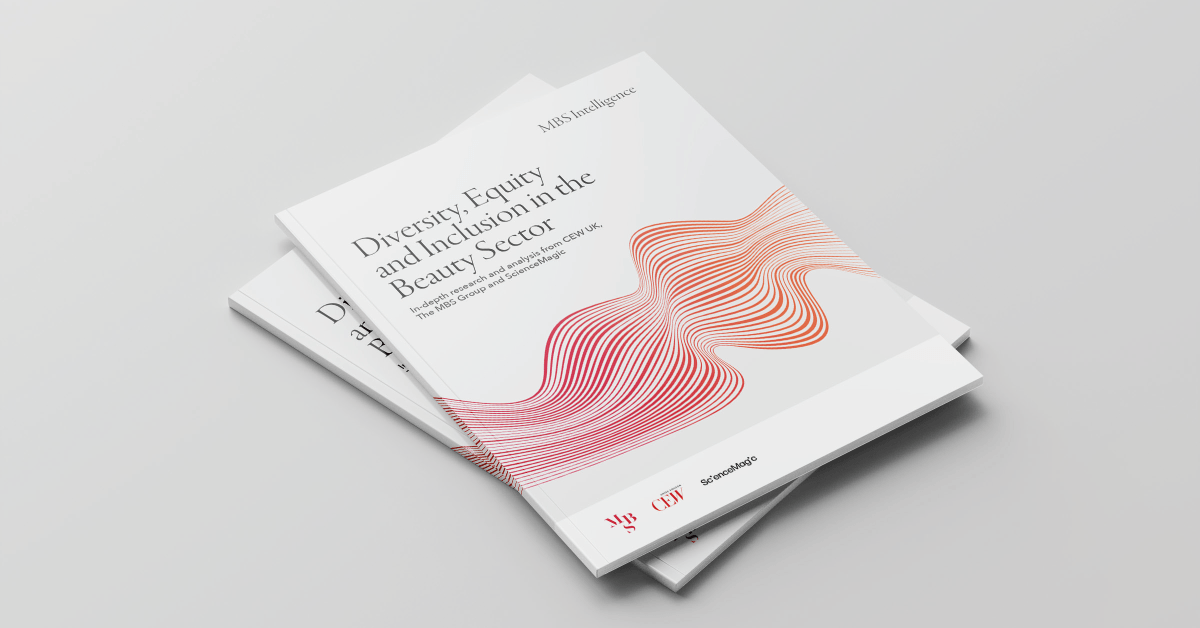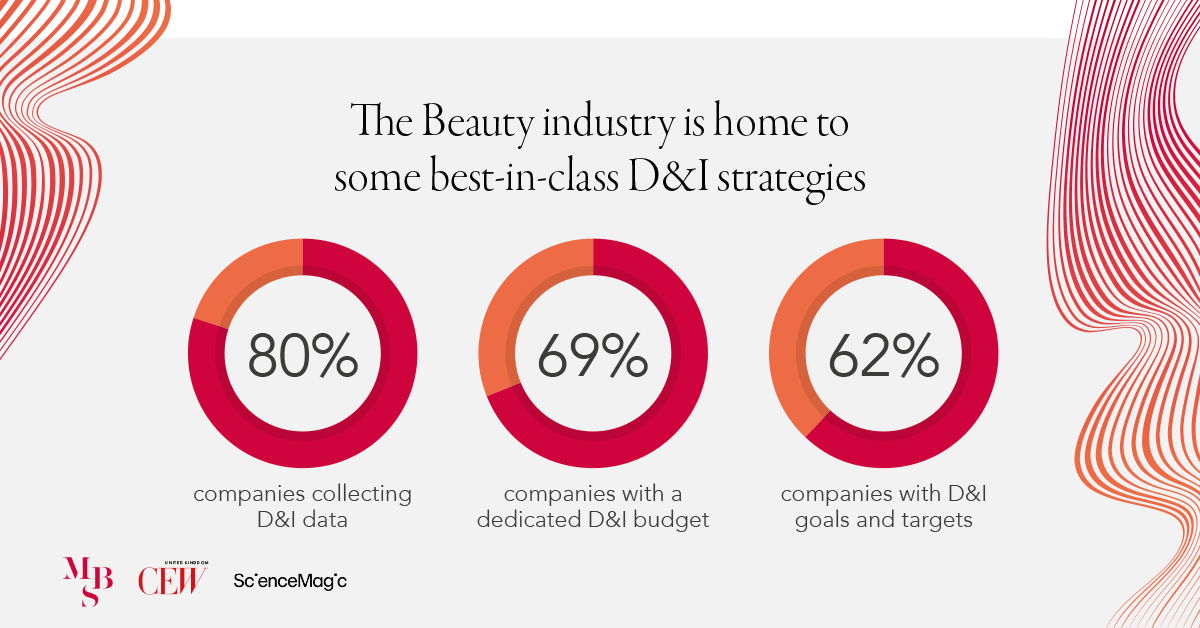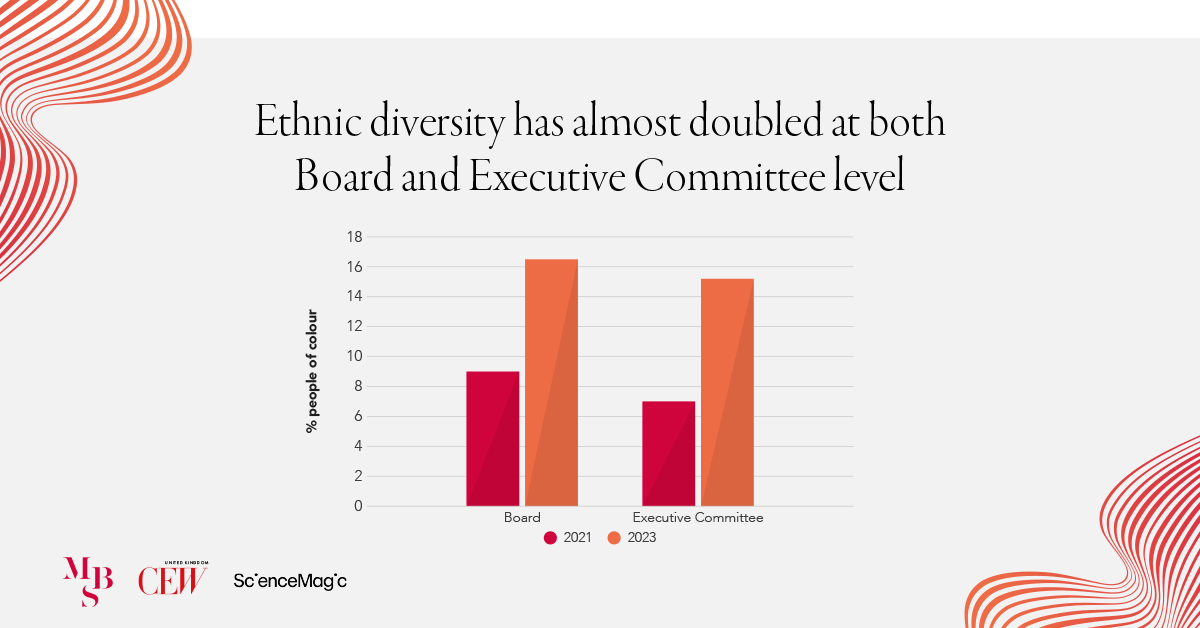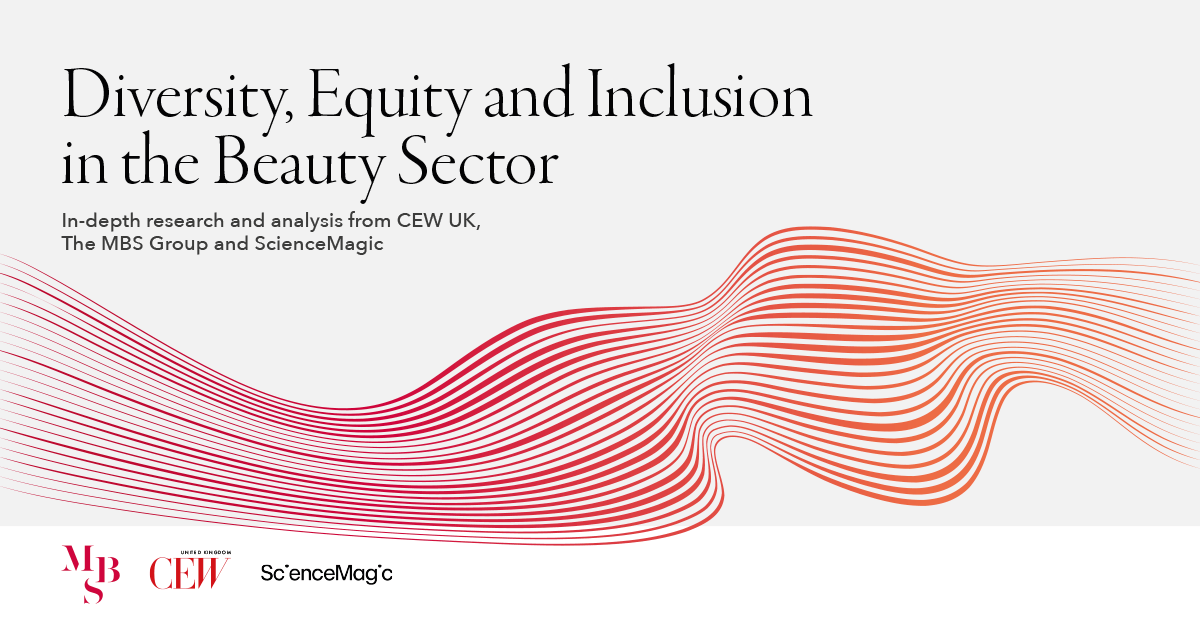There’s something that feels particularly urgent about discussing diversity and inclusion in the Beauty sector. Over the past decade or so, the way we think about beauty has transformed, and there’s now a pressing commercial imperative for Beauty businesses to reflect this, not to mention to develop more inclusive product lines.
It was against this backdrop that we first partnered with CEW UK and ScienceMagic back in early 2021, to assess if Beauty companies were adequately prioritising diversity and inclusion. What we found was that D&I strategies were underdeveloped, and that a fear of saying the wrong thing was holding leaders back from openly discussing this critical topic.
Now, two years on, we’re delighted to present the 2023 edition of our research.

Over the past few months, MBS has undertaken in-depth research, measuring the representation of women and leaders from an ethnic minority background at Board and executive committee level in Beauty. We’ve also held detailed conversations with Chairs, CEOs, HRDs and Heads of D&I to hear the steps companies are taking to make their organisations more inclusive.
Our analysis paints a mixed picture – but there are many reasons to be positive.
Encouragingly, Beauty is home to some of the most comprehensive D&I strategies in the entire consumer-facing sector. Most companies (87%) have a coordinated strategy, and a large majority are backed up by budget and underpinned by data.

“We measure at every stage of the journey, from application through to offer stage,” said Victoria Foley, VP People & Talent at Beauty Pie as part of a case study in the report. “The idea is that we can track over the course of the year the applicants we’re getting from certain groups, and then in the quarter that follows how many of those have gone on to become colleagues. We can keep an eye out for any red flags: if 50% of applications are coming from underrepresented minorities, but only 5% of interviews, then that’s something we can spot and address.”
A notable majority – 62% – of companies we spoke to have targets related to D&I. Jessica Gilbert, Global Head of Diversity, Equity and Inclusion at IFF reflected on their ambitious goals: “having goals is one thing,” she said, “but we really need to hold ourselves accountable. So, the targets are factored into the bonus structure for our seniormost leaders.”

Most encouragingly, leaders told us that D&I was owned from the very top of the organisation, with sponsorship from the Board. One leader told us that D&I is consistently a “top-three agenda item on the Board and executive committee.”
Beauty has also made good strides forward on the representation of minority groups. Ethnic diversity has doubled on the executive committee, and nearly doubled at Board level, for example. And the proportion of women at both tiers places Beauty ahead of its adjacent consumer industries on gender diversity.

However, there is still a way to go. While there’s solid representation of women, the most senior strategic roles of Chair, CEO and CFO are still overwhelmingly held by men, for example, and the overall talent pool remains homogenous. “When I look at our corporate roles,” said one CEO, “they do seem to be filled by the same type of privileged person.”

Happily, steps are being taken to open up the industry. Beauty is home to a variety of academy programmes and mentoring schemes, and some have initiatives in place to support underrepresented founders break into the industry. Glossier’s Black Beauty Grant is a leading example of one such programme. As part of the report, Roya Shariat outlines how Glossier launched their Grant, and the impact it’s had on democratising the Beauty space.
It has been a privilege to sit down with leaders over the past few months to discuss this critical topic and to be highlighting examples of best practice for others to learn from. Edgewell Personal Care, for example, has in place a comprehensive series of activities relating to the menopause, designed to educate and support colleagues. Speaking as a case study in the report, Gurinder Sagoo outlined the resources, events, and policies offered by Edgewell to help those experiencing menopause symptoms and equip the whole business with the tools to help others.
Interestingly – and despite how comprehensive D&I strategies are in the sector – executives in Beauty are still more hesitant to openly discuss the topic than leaders in other consumer adjacencies like retail and hospitality. This is perhaps because of the level of scrutiny placed on Beauty companies, or how closely diversity is linked to the product offering. We hope that this report can inspire progress and encourage more open conversation on diversity in the Beauty industry.
As the Beauty sector continues to expand and evolve, companies need creative ideas – and those come from diverse teams which feel included. You can read the report here, and we’d love to hear any thoughts or feedback.
Huw.LlewellynWaters@thembsgroup.co.uk | francesca.sevilla@thembsgroup.co.uk | @TheMBSGroup








